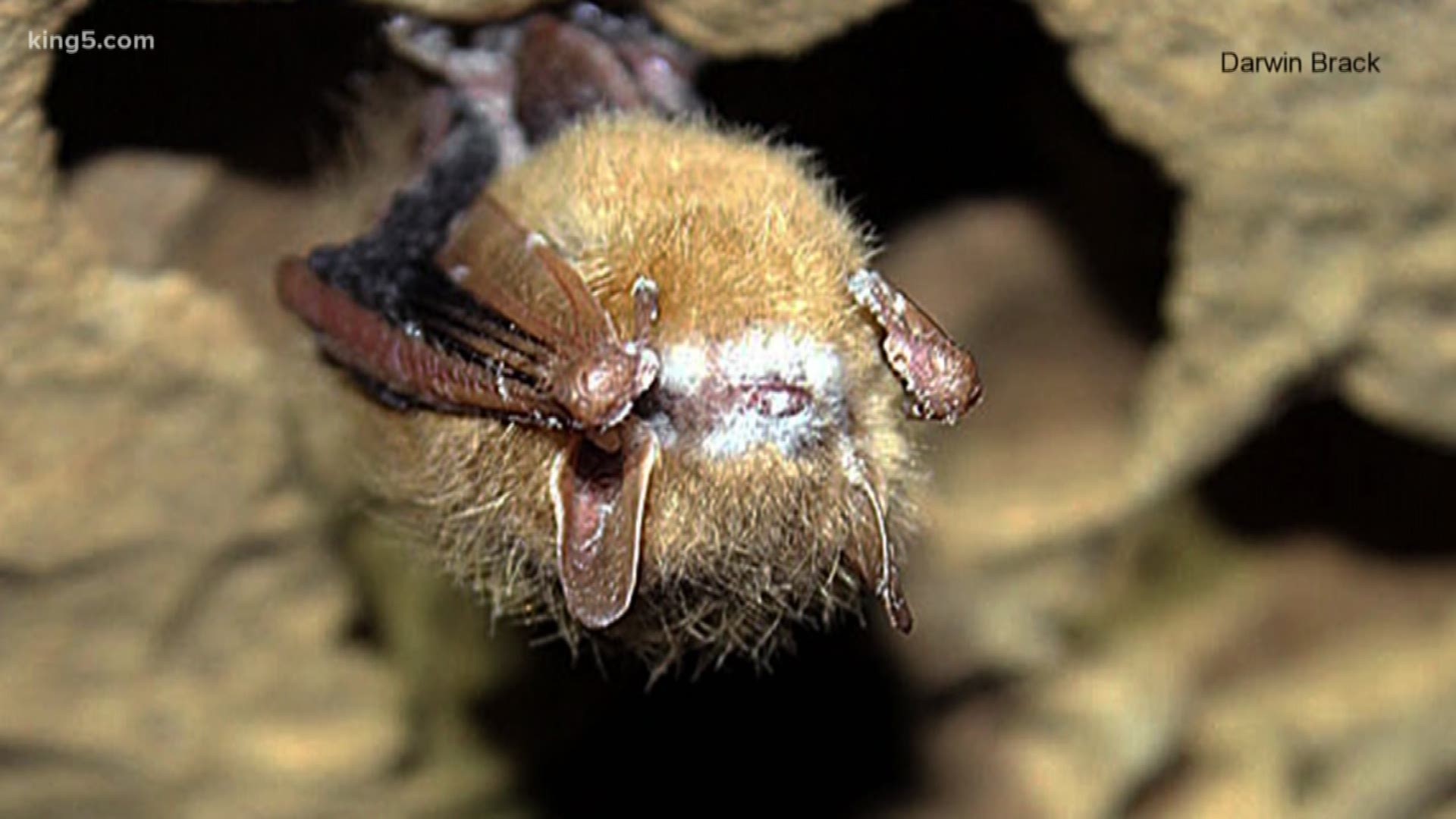Editor's note: The above video on the spread of white-nose syndrome to eastern Washington originally aired in September 2019.
Wildlife officials have identified an often-fatal disease in a new species of bat in King County.
A dead bat that was found outside the Cedar River Education Center near North Bend in April 2017 was confirmed to have white-nose syndrome. However, the species of bat wasn’t identified until December 2019 as a fringed myotis.
This is the first case of white-nose syndrome in a fringed myotis, according to the Washington Department of Fish and Wildlife.
“Tracking white-nose syndrome and its effects on bat populations is challenging when little is known about bats in Washington, and this species in particular,” WDFW white-nose syndrome coordinator Abby Tobin said in a statement released Tuesday. “The confirmation of white-nose syndrome in another bat species is a reminder of how much we still have to learn about this devastating disease.”
White-nose syndrome is a fungal disease that damages a bat’s wings, making it difficult to fly. Infected bats may also leave hibernation early, causing the bats to burn through fat stores and become dehydrated or starve to death.
The disease was first seen in North America in 2006, but it wasn’t documented in Washington until 2016. Since then, there have been 46 cases of white-nose syndrome in four bat species in Washington, according to WDFW.
In September, researchers confirmed a case of white-nose syndrome in eastern Washington for the first time.
White-nose syndrome has wiped out millions of bats in eastern North America, threatening an animal that is an important part of the ecosystem, eating millions of insects and providing pest control.
Although white-nose syndrome does not affect human or other wildlife, people are urged not to touch sick or dead bats, because people can inadvertently transmit the disease to other bats through contaminated clothing or shoes.
If you find a sick or dead bat or notice a bat acting strangely, including flying during daytime or freezing weather, report the sighting to WDFW online or by calling (360) 902-2515.

